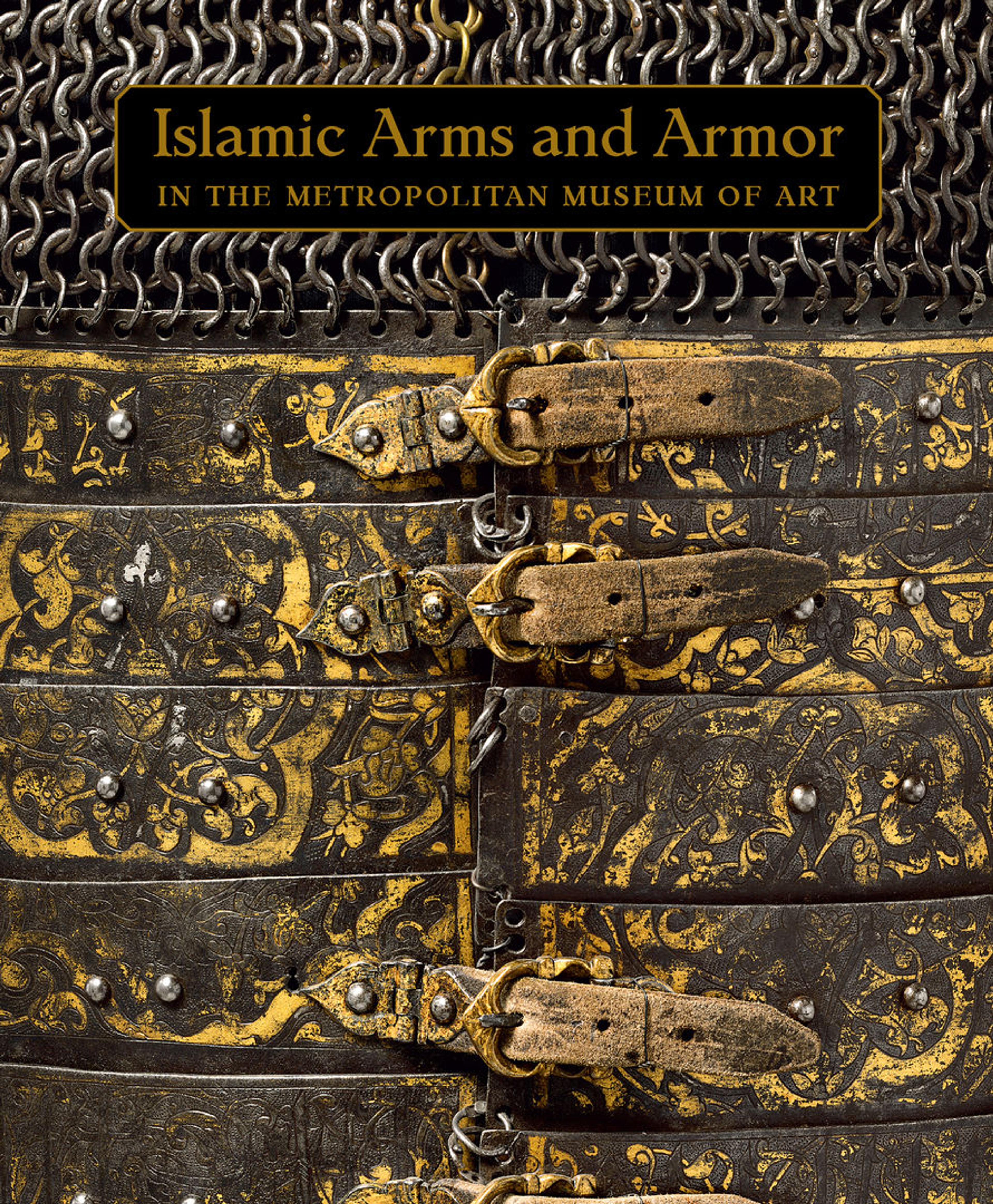Armor for Man and Horse
The horseman's armor and the horse bard, composed of elements from different sources, are associated here to provide a representation of the heavy cavalry as it is illustrated frequently in Persian miniatures of the fifteenth and sixteenth centuries. The armors are of distinctly Near Eastern type, composed of small steel plates connected by mail. Although the plates originally were polished mirror bright, armors for man and horse frequently were covered with colorful textiles.
Among the associated pieces, the extremely tall conical helmet (acc. no. 04.3.208) is noteworthy as an example of a type worn in Iran and Russia in the late fifteenth and early sixteenth centuries. Similar helmets depicted in miniature paintings often show a small pennon attached to the long finial. The shield (acc. no. 36.25.610), engraved with large cartouches enclosing floral arabesques, may have originated in fifteenth-century Iran. The ax (acc. no. 36.25.1829), with its long, faceted steel shaft and distinctively shaped blade, is typical of those carried by the Mamluks of Egypt and Syria in the late fifteenth to early sixteenth century. The shaffron (defense for the horses's head) is engraved with arabesques of a type suggesting an Ottoman Turkish origin between about 1525 and 1550.
Among the associated pieces, the extremely tall conical helmet (acc. no. 04.3.208) is noteworthy as an example of a type worn in Iran and Russia in the late fifteenth and early sixteenth centuries. Similar helmets depicted in miniature paintings often show a small pennon attached to the long finial. The shield (acc. no. 36.25.610), engraved with large cartouches enclosing floral arabesques, may have originated in fifteenth-century Iran. The ax (acc. no. 36.25.1829), with its long, faceted steel shaft and distinctively shaped blade, is typical of those carried by the Mamluks of Egypt and Syria in the late fifteenth to early sixteenth century. The shaffron (defense for the horses's head) is engraved with arabesques of a type suggesting an Ottoman Turkish origin between about 1525 and 1550.
Artwork Details
- Title: Armor for Man and Horse
- Date: ca. 1450–1550
- Culture: Turkish
- Medium: Steel, iron, leather
- Dimensions: Wt. of man's armor, 31 lb. 2 oz. (14.12 kg); Wt. of horse armor, 71 lb. 15 oz. (32.63 kg)
- Classification: Armor for Horse and Man
- Credit Line: The Collection of Giovanni P. Morosini, presented by his daughter Giulia, 1932
- Object Number: 32.75.248a–e, g–l
- Curatorial Department: Arms and Armor
More Artwork
Research Resources
The Met provides unparalleled resources for research and welcomes an international community of students and scholars. The Met's Open Access API is where creators and researchers can connect to the The Met collection. Open Access data and public domain images are available for unrestricted commercial and noncommercial use without permission or fee.
To request images under copyright and other restrictions, please use this Image Request form.
Feedback
We continue to research and examine historical and cultural context for objects in The Met collection. If you have comments or questions about this object record, please complete and submit this form. The Museum looks forward to receiving your comments.
